CALEOSIN 1 interaction with AUTOPHAGY-RELATED PROTEIN 8 facilitates lipid droplet microautophagy in seedlings
- PMID: 37619984
- PMCID: PMC10663143
- DOI: 10.1093/plphys/kiad471
CALEOSIN 1 interaction with AUTOPHAGY-RELATED PROTEIN 8 facilitates lipid droplet microautophagy in seedlings
Abstract
Lipid droplets (LDs) of seed tissues are storage organelles for triacylglycerols (TAGs) that provide the energy and carbon for seedling establishment. In the major route of LD degradation (lipolysis), TAGs are mobilized by lipases. However, LDs may also be degraded via lipophagy, a type of selective autophagy, which mediates LD delivery to vacuoles or lysosomes. The exact mechanisms of LD degradation and the mobilization of their content in plants remain unresolved. Here, we provide evidence that LDs are degraded via a process morphologically resembling microlipophagy in Arabidopsis (Arabidopsis thaliana) seedlings. We observed the entry and presence of LDs in the central vacuole as well as their breakdown. Moreover, we show co-localization of AUTOPHAGY-RELATED PROTEIN 8b (ATG8b) and LDs during seed germination and localization of lipidated ATG8 (ATG8-PE) to the LD fraction. We further demonstrate that structural LD proteins from the caleosin family, CALEOSIN 1 (CLO1), CALEOSIN 2 (CLO2), and CALEOSIN 3 (CLO3), interact with ATG8 proteins and possess putative ATG8-interacting motifs (AIMs). Deletion of the AIM localized directly before the proline knot disrupts the interaction of CLO1 with ATG8b, suggesting a possible role of this region in the interaction between these proteins. Collectively, we provide insights into LD degradation by microlipophagy in germinating seeds with a particular focus on the role of structural LD proteins in this process.
© The Author(s) 2023. Published by Oxford University Press on behalf of American Society of Plant Biologists.
Conflict of interest statement
Conflict of interest statement. None declared.
Figures

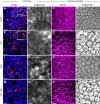
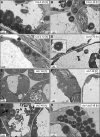
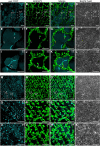


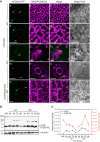
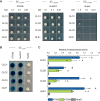

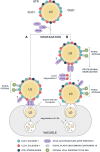
Similar articles
-
LIPID DROPLET PROTEIN OF SEEDS is involved in the control of lipid droplet size in Arabidopsis seeds and seedlings.Plant Cell. 2025 May 9;37(5):koaf121. doi: 10.1093/plcell/koaf121. Plant Cell. 2025. PMID: 40373051 Free PMC article.
-
Lipid Droplets and Their Autophagic Turnover via the Raft-Like Vacuolar Microdomains.Int J Mol Sci. 2021 Jul 29;22(15):8144. doi: 10.3390/ijms22158144. Int J Mol Sci. 2021. PMID: 34360917 Free PMC article. Review.
-
Molecular Machinery of Lipid Droplet Degradation and Turnover in Plants.Int J Mol Sci. 2023 Nov 7;24(22):16039. doi: 10.3390/ijms242216039. Int J Mol Sci. 2023. PMID: 38003229 Free PMC article. Review.
-
Dual Role for Autophagy in Lipid Metabolism in Arabidopsis.Plant Cell. 2019 Jul;31(7):1598-1613. doi: 10.1105/tpc.19.00170. Epub 2019 Apr 29. Plant Cell. 2019. PMID: 31036588 Free PMC article.
-
Lipid droplet autophagy in the yeast Saccharomyces cerevisiae.Mol Biol Cell. 2014 Jan;25(2):290-301. doi: 10.1091/mbc.E13-08-0448. Epub 2013 Nov 20. Mol Biol Cell. 2014. PMID: 24258026 Free PMC article.
Cited by
-
α/β hydrolase domain-containing protein 1 acts as a lysolipid lipase and is involved in lipid droplet formation.Natl Sci Rev. 2024 Nov 7;11(12):nwae398. doi: 10.1093/nsr/nwae398. eCollection 2024 Dec. Natl Sci Rev. 2024. PMID: 39791125 Free PMC article.
-
Microlipophagy from Simple to Complex Eukaryotes.Cells. 2025 Jan 18;14(2):141. doi: 10.3390/cells14020141. Cells. 2025. PMID: 39851569 Free PMC article. Review.
-
Identification and Characterization of Lipid Droplet-Associated Protein (LDAP) Isoforms from Tung Tree (Vernicia fordii).Plants (Basel). 2025 Mar 5;14(5):814. doi: 10.3390/plants14050814. Plants (Basel). 2025. PMID: 40094817 Free PMC article.
-
Proteomics revealed novel functions and drought tolerance of Arabidopsis thaliana protein kinase ATG1.BMC Biol. 2025 Feb 21;23(1):48. doi: 10.1186/s12915-025-02149-3. BMC Biol. 2025. PMID: 39984923 Free PMC article.
-
Autophagosome biogenesis and organelle homeostasis in plant cells.Plant Cell. 2024 Sep 3;36(9):3009-3024. doi: 10.1093/plcell/koae099. Plant Cell. 2024. PMID: 38536783 Free PMC article. Review.
References
-
- Akita K, Takagi T, Kobayashi K, Kuchitsu K, Kuroiwa T, Nagata N. Ultrastructural characterization of microlipophagy induced by the interaction of vacuoles and lipid bodies around generative and sperm cells in Arabidopsis pollen. Protoplasma. 2021:258(1):129–138. 10.1007/s00709-020-01557-2 - DOI - PMC - PubMed
-
- Avin-Wittenberg T, Bajdzienko K, Wittenberg G, Alseekh S, Tohge T, Bock R, Giavalisco P, Fernie AR. Global analysis of the role of autophagy in cellular metabolism and energy homeostasis in Arabidopsis seedlings under carbon starvation. Plant Cell. 2015:27(2):306–322. 10.1105/tpc.114.134205 - DOI - PMC - PubMed
-
- Blée E, Boachon B, Burcklen M, Le Guédard M, Hanano A, Heintz D, Ehlting J, Herrfurth C, Feussner I, Bessoule JJ. The reductase activity of the Arabidopsis caleosin RESPONSIVE TO DESSICATION20 mediates gibberellin-dependent flowering time, abscisic acid sensitivity, and tolerance to oxidative stress. Plant Physiol. 2014:166(1):109–124. 10.1104/pp.114.245316 - DOI - PMC - PubMed
MeSH terms
Substances
Grants and funding
LinkOut - more resources
Full Text Sources
Research Materials

